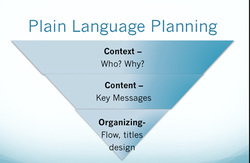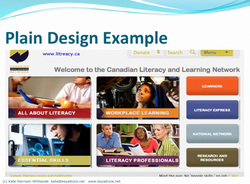Last year's International Association Business Communicators (ABC) Toronto and IPLainDay co-hosted Tweet-up was so successful, it is happening again this year. The theme is Show and Tell. The Tweet-up takes place from noon-1 pm Toronto-time (EDT) using the hashtag #plainshare2016. Use this hashtag for any IPlainDay tweets.
Cheryl Stephens, Plain Language Wizardry, and Kate Harrison Whiteside, Key Advice and the Plain Language Academy, co-founded the first professional organization, now PLAIN. But, with the continued growth in the field, they wanted to celebrate the great work going on globally. Five years ago they launched International Plain Language Day October 13 (the date US government introduced plain language laws).
The IPlainDay 2016 theme is Show and Tell, to encourage writers and designers to inspire others by sharing examples—on bulletin boards, in e-newsletters, at local libraries, during events and on social media.
"So much plain language progress is being made behind the scenes," said Kate Harrison Whiteside. "It is so important that you share your progress and celebrate—it doesn't matter where, when or how, just that you share."
Here are five ways to celebrate the 5th International Plain Language Day Oct 13:
- Set up a display of before and after examples in your office.
- Invite colleagues to a meeting on IPlainDay to discuss clear writing benefits.
- Ask your local learning centre, library, coffee shop to host an event.
- Get members of your professional association to submit examples and post for others to see.
- Join the #plainshare2016 tweet-up talk on Twitter.


 RSS Feed
RSS Feed
